Lego Labs
Experiment with processes for rapidly developing digital products. Go from problem to prototype with feedback and iterations while building a Colony on Mars (with legos)!
Darcie Fitzpatrick
What Is Lego Labs?
Legos inspire creativity and nostalgia, they also offer a great building block for experimentation (no pun intended 😜 ). This workshop is for large or small groups of people to experiment with software processes and is especially helpful in gaining buy-in for new ways of working. The session touches upon human-centered design, lean product development and agile delivery.
Why Do Lego Labs?
The Lego Labs workshop provides an opportunity to learn and practice iterative approaches to building software in an environment free of the pressure of business requirements. Participants of Lego Labs will fail fast and celebrate successes while fostering camaraderie with teammates.
“One of the best things a company can do when it comes to innovation is to provide employees with the time and resources they need to freely experiment with new techniques....”
— “8 Significant Ways to Foster a Culture of Experimentation,” Forbes
When growing a culture of experimentation it can be counterproductive to jump right into changes in process, primarily because too much too fast often deters people from adopting new ways of working.
How to do Lego Labs?
A small team led Lego Labs at ProductCon LA and this practice outlines the progress of that session, including photos of participants. This was with a group of 30+ product management professionals from various organizations, who met for the first time that day. The workshop was facilitated over the course of 90 minutes.
It is the year 2099. Earth is still awesome, but overpopulated. Interplanetary City Builders, Inc. has been awarded a contract to build the First Colony on Mars. 👽
There is efficient transportation to-and-from the planet 🚀 and the necessary infrastructure is in place for workers to build quickly. The people who will colonize Mars have visited and are aware of the challenges so they will be involved in progress reviews to provide feedback.
Two employees have been hired as Product Owners to guide the direction, Colonists are available to learn from, and a team of people are ready to start building. 🛠
✔️ PLAN: Workshop Setup
There is pre-production that will need to be completed as well as supplies prepared. Some things to consider include:
- Assign a facilitator and co-facilitator, the Product Owners
- Determine participants as employees / product teams
- Decide on participants as Colonists (aka users for testing with)
- Schedule a time and place for the workshop & plan 1-3 hours
- Create a presentation document as facilitator’s guide (more templates in ‘links we love’ below)
- Make handouts of process overview and Colony specifics (more examples in links below)
- Create a space-y themed playlist to invoke a fun ambience
- Supplies needed: Assorted lego pieces & baseplates, sharpies, pencils & paper, printed handouts, sticky notes 3x3 + 8x6 (create a shopping list)
- Map of Mars: This can be printed on card stock from a large image of the planet
- Brainstorming food: Healthy snacks and drinks for sessions longer than an hour
Note: Determining who should participate can be tough. In addition to cross-functional product team roles it is important to include leadership and different lines of business, which will help gain empathy and understanding of processes across an entire organization.
✔️ STEP 0: Agenda
Every good session should have an agenda. These steps can be added to a whiteboard or printed for participants to have an overview of the time together.
- Intro & Scenario
- Discovery to Roadmap
- Teams to Ideation
- Sprint 1 Planning
- Sprint 1 Delivery
- Feedback & Options
- Sprint 2 Planning & Delivery
- Reflect & Admire
Plan the workshop according to the timeframe available. Each step can be shortened or lengthened based upon what is desired to be learned. For example, the second sprint can be removed or some of the exercises combined if necessary.
✔️ STEP 1: Intro & Scenario
The goal in this step is to help participants know what to expect. After a brief introduction to why the workshop is happening, start with a Social Contract exercise to help instill a sense of trust amongst the group. Use participant handouts to assist in understanding the scenario and logistics for building a Colony on Mars. The Mobius Loop process map may also be printed and available to discuss phases of iteration and steps for the workshop.
Note: Use the Interplanetary City Builders, Inc. scenario outlined above or be creative and develop something new based on session goals.
✔️ STEP 2: Discovery to Roadmap
First is Discovery of the problem space where participants have an opportunity to ask questions of the Product Owners and the Colonists. Give a quick overview on how to conduct qualitative research and encourage note-taking on an Empathy Map, then allow the participants to ask open-ended questions and learn more. The goal is to get an understanding of the challenges and determine areas of the Colony that must be built.
Next give a quick introduction to creating a Product Roadmap and explain the difference between Epics and Features. With insights from Discovery fresh in mind, ask the participants a How Might We question to brainstorm out loud the high level build areas for the Colony, which will be the Epics. As ideas are shared, write those onto the 8x6 sticky pad, after ideation consolidate similar topics and collaborate on adding build areas to the Spine of the Roadmap.
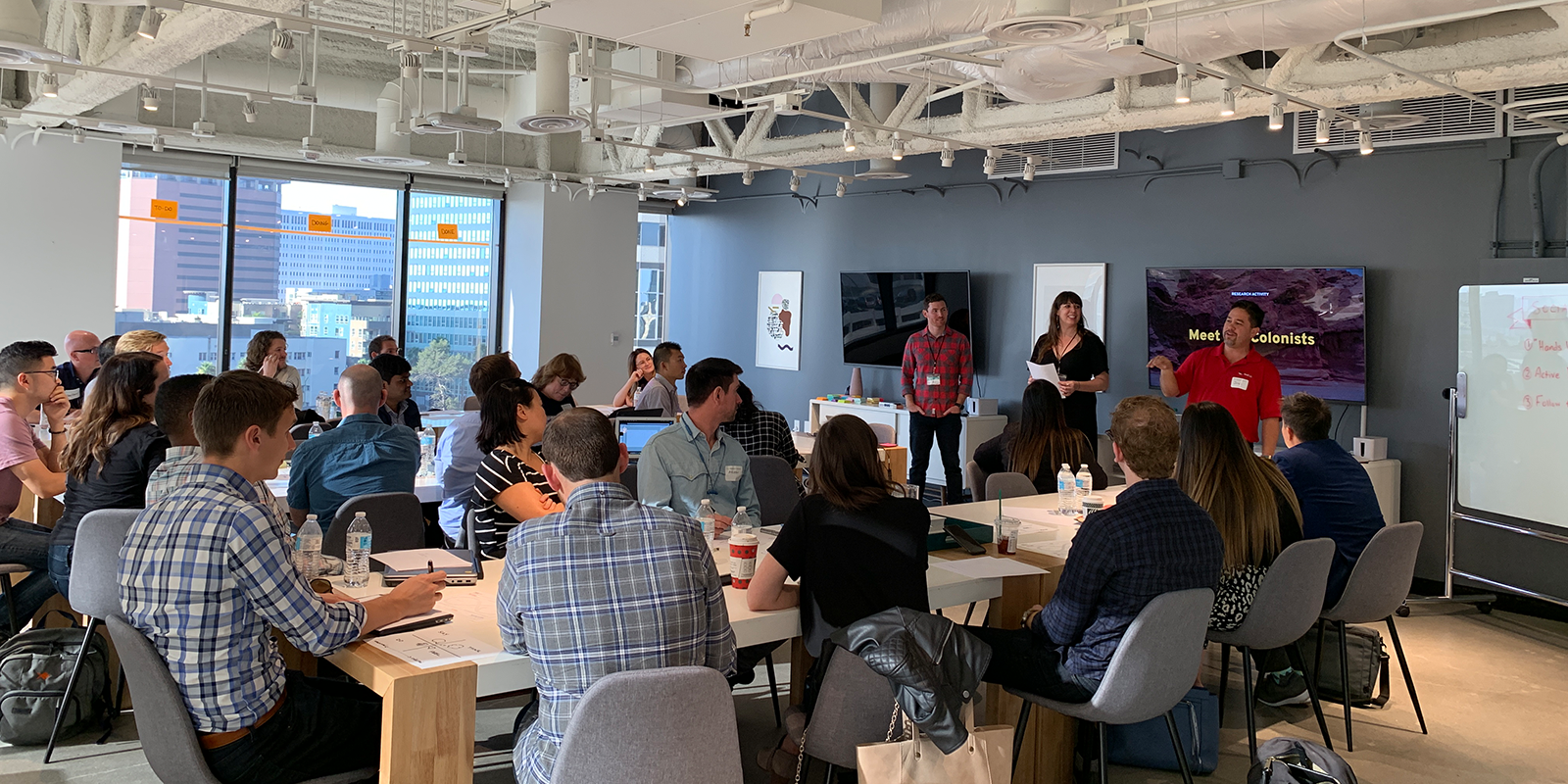
Facilitating Lego Labs at ProductCon in Los Angeles for a VIP group of conference attendees.
✔️ STEP 3: Teams to Ideation
Now that the Colony Epics have been determined, give an overview about working in cross-functional teams. Discuss the role of a Product Manager as voice of the business, a Product Designer as voice of the user, and a Software Engineer as voice of the system.
Allow participants to self-assign into groups of three based on those roles and choose a Mars build area (Epic) to focus upon. Each product team now has a set amount of time to brainstorm together what they will build as specific Features for the Colony area chosen. These features should be noted on 3x3 sticky and consolidated.
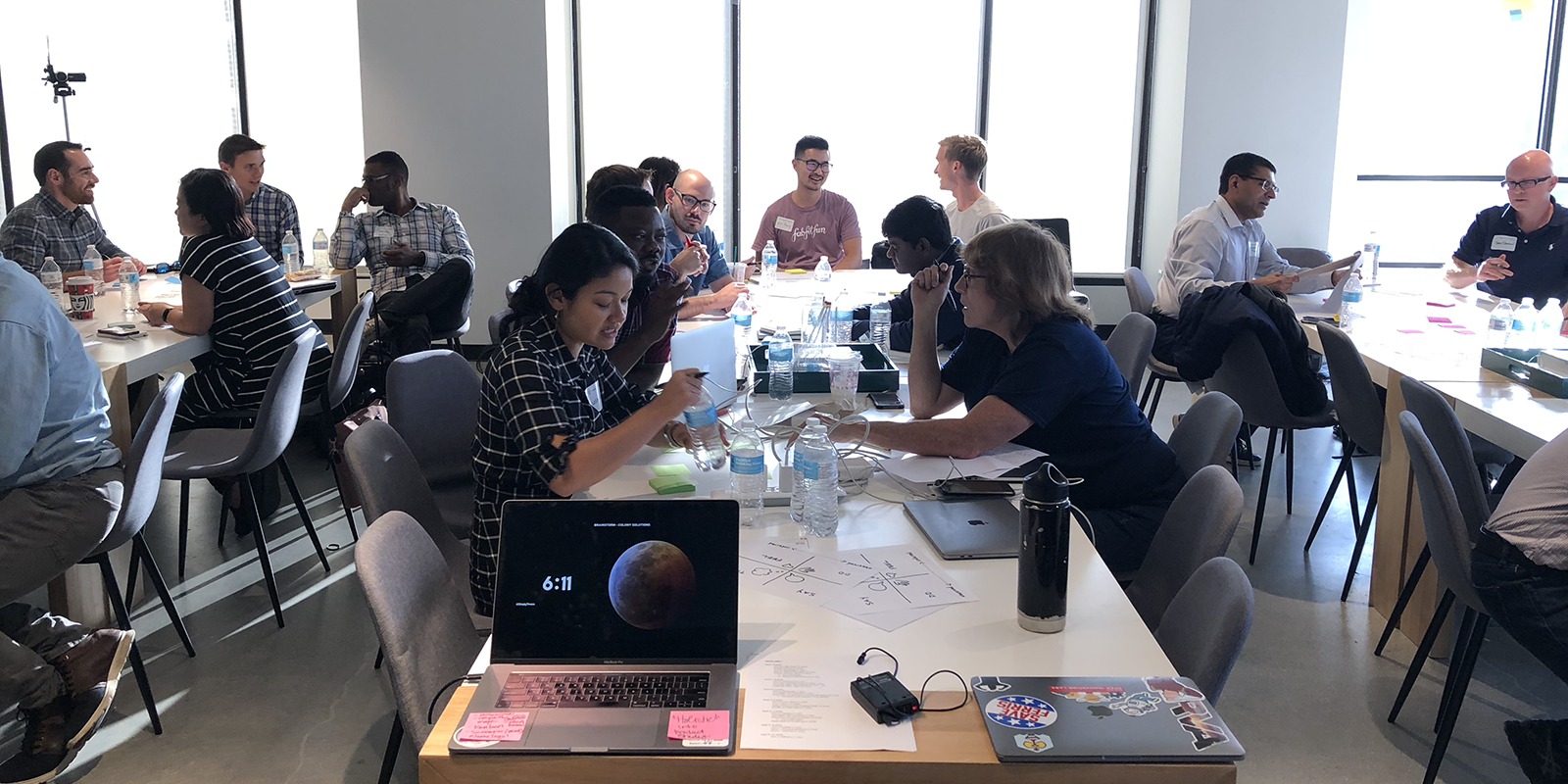
The teams ideating feature solutions for their build area.
Note: Encouraging participants to choose a role on the team other than their current profession can help in gaining empathy for cross-functional tasks. For a longer workshop timeframe consider adding a quick brainstorm for the groups to create their team name.
✔️ STEP 4: Sprint 1 Planning
Allow the teams to add features under the Epic on the roadmap and discuss that this gives a holistic view across each build area. Give an overview of how to prioritize a stack rank of the Features based upon User Value – with most valuable features at the top of the stack.
Once the stack feels relevant provide an introduction to using a simple Kanban board for each team to prioritize a backlog. Discuss that the features on the Roadmap can be translated into User Stories and have the Product Managers on each team prepare to manage completion of each item added to the backlog.
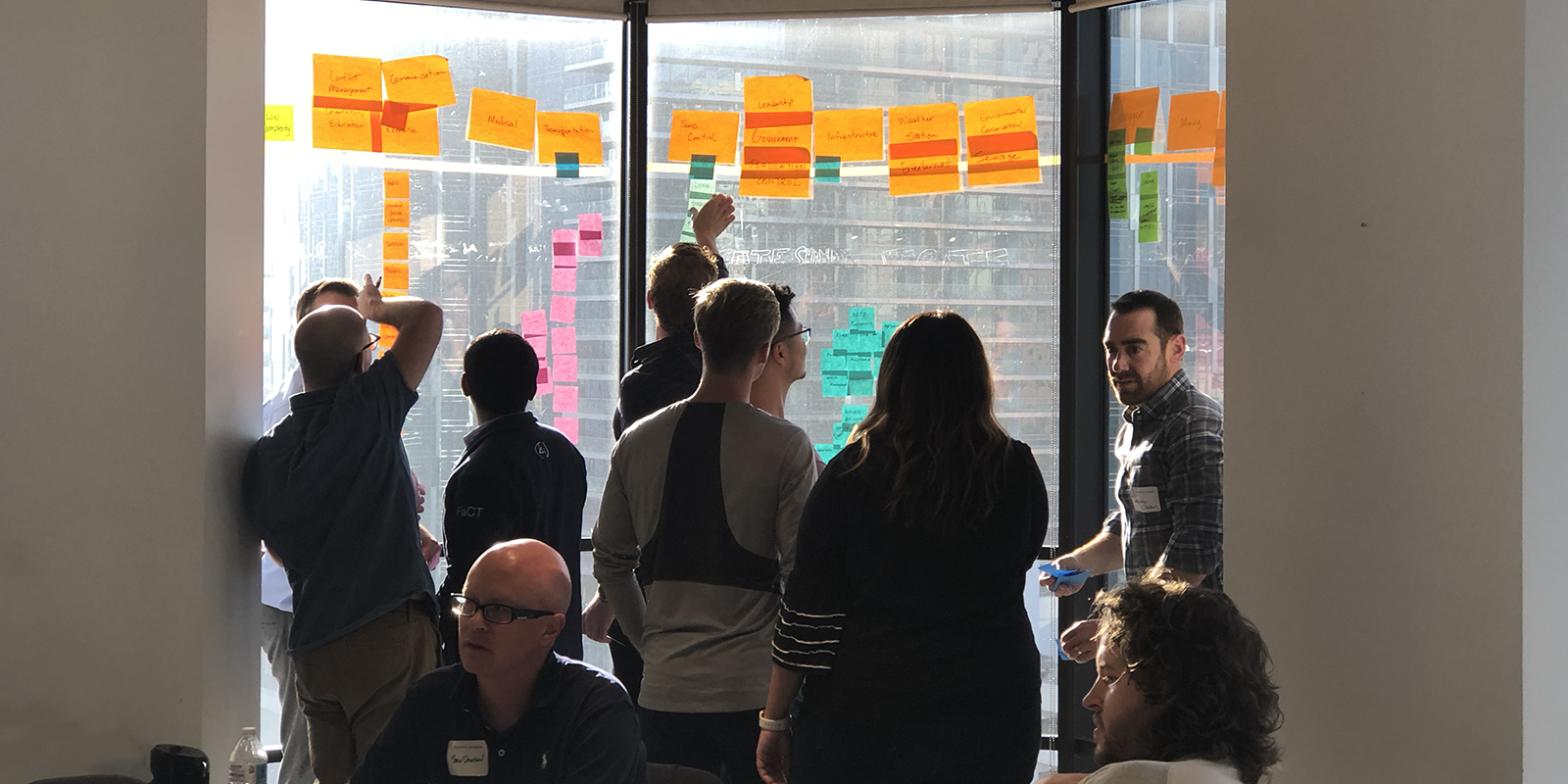
Groups adding features to the Roadmap and deciding on stack rank.
✔️ STEP 5: Sprint 1 Delivery
Refer to the Mobius Loop handout and explain moving through to the Delivery phase of the product development process. Give an overview of the feedback loop cycles for Build, Measure, Learn. Ensure team members keep the vision and Colonist’s needs in-mind.
Detail a basic task list for building prototypes: 1) Build 2) Approve 3) Iterate 4) Repeat. Ensure the group understands the goal is to complete more than one feature / user story from their backlog. Allow teams to deploy the prototypes to the Mars Colony Map after completing a story or provide a couple minutes at the end of the building to do so.
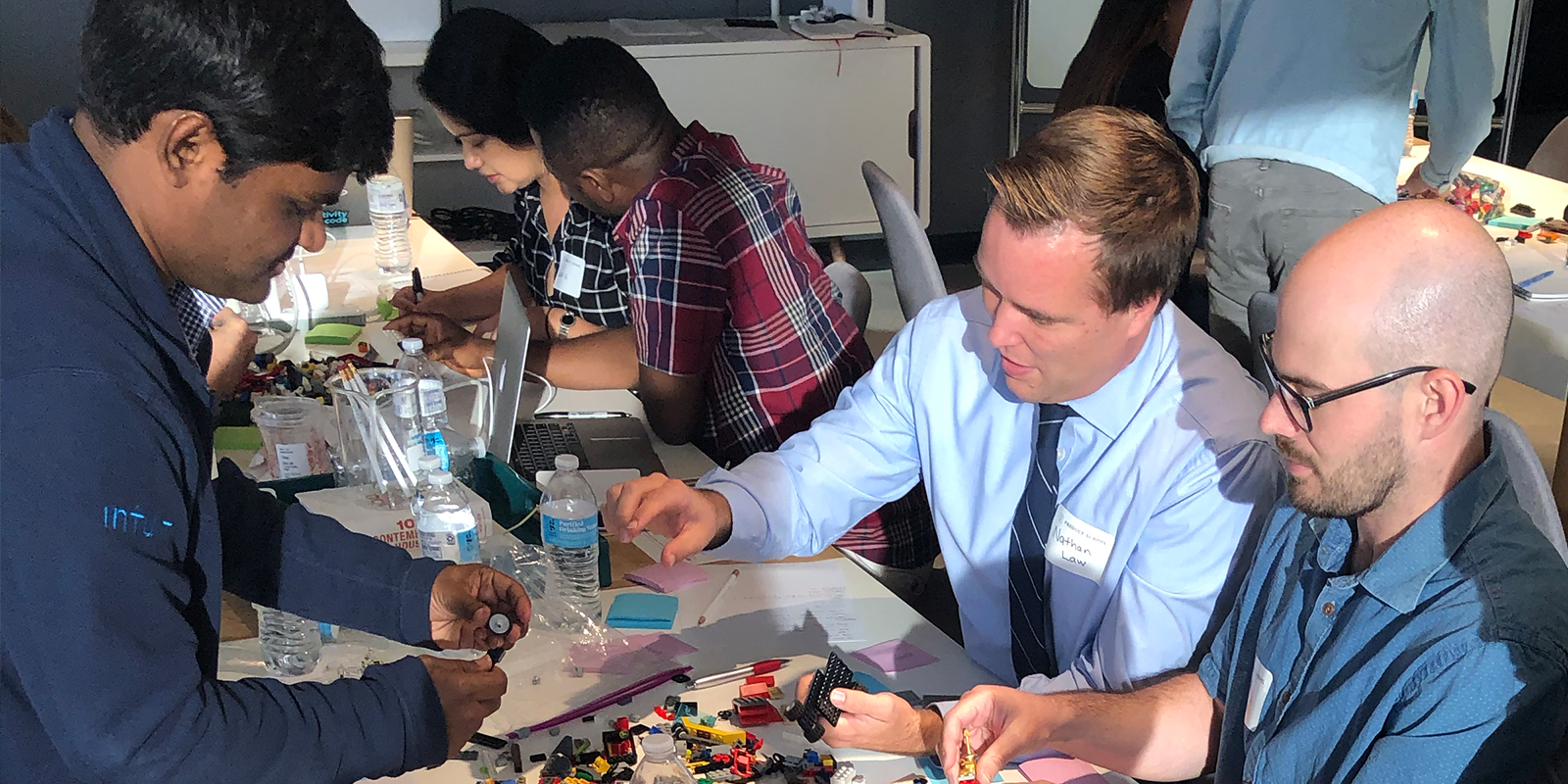
People who had never met each other before working closely to create a Lego prototype.
✔️ STEP 6: Feedback & Options
Refer back to the Mobius Loop and discuss the Options pivot, this is the time when teams will decide how to iterate based upon feedback. Provide some time for the entire group to now look at the prototypes holistically on the map.
Allow the Colonists to study the work and think out loud about what they see or do not see. Product Owners should be sure to point out any reminders about the vision or goals. Teams can then ask clarifying questions about the feedback received. Talk to the group about developing actionable insights from user feedback, and ensure it is understood how that will inform iterations in the next sprint.
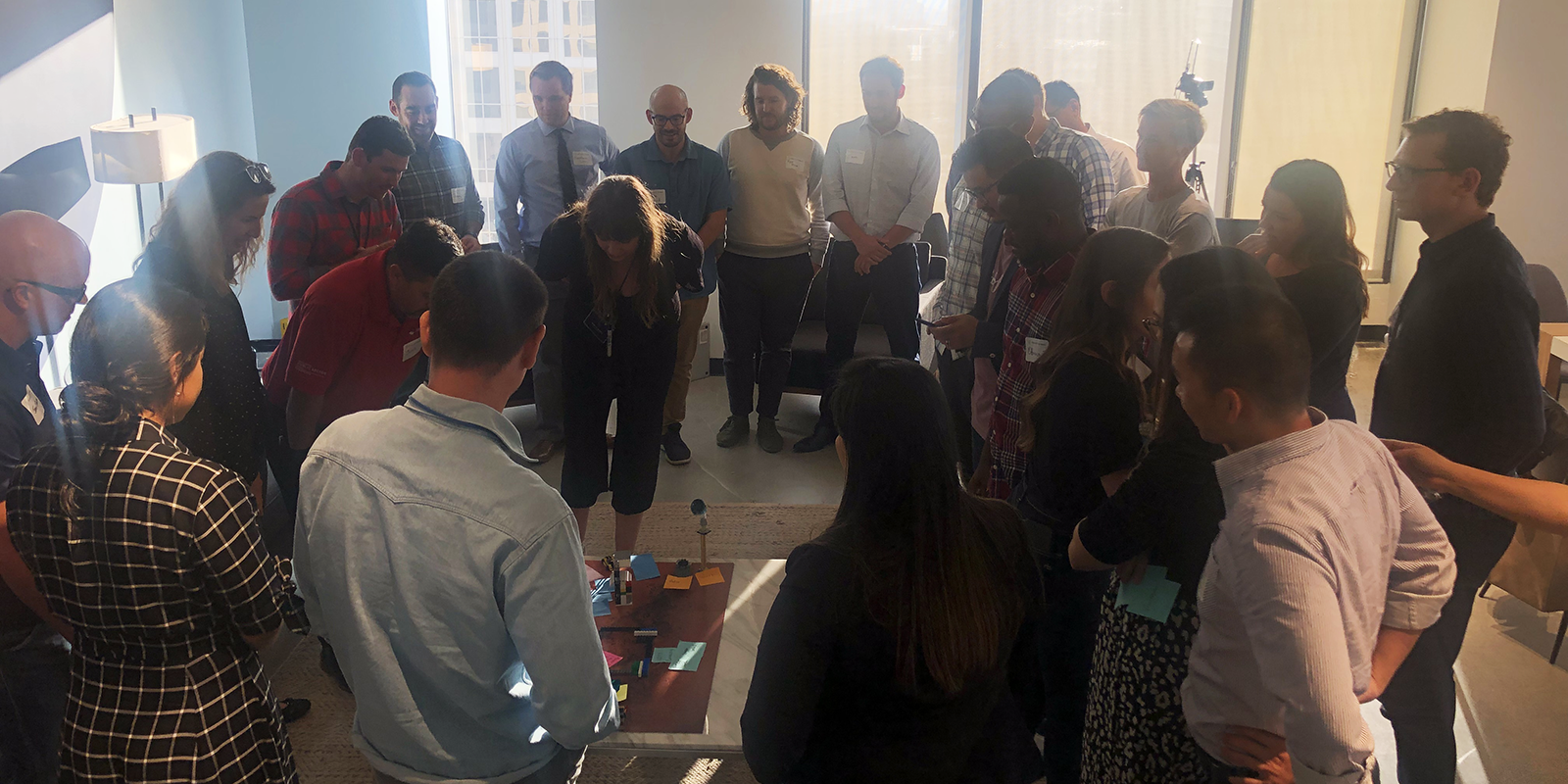
Gathering feedback from the Colonists and Product Owners for iteration planning.
Note: Most groups will immediately notice the holistic view of how each separate prototype connects with the other build areas on the Mars map. Often this develops some ideas about how to iterate, if this is not discussed Product Owners can point it out.
✔️ STEP 7: Sprint 2 Planning & Delivery
At this point teams should be comfortable with the sprint process and some may be ahead of the group in planning out iterations for the prototypes. Before jumping in, ensure the teams are thinking about any Hangover Work that did not get done from the first sprint. This can be incorporated into what is built next.
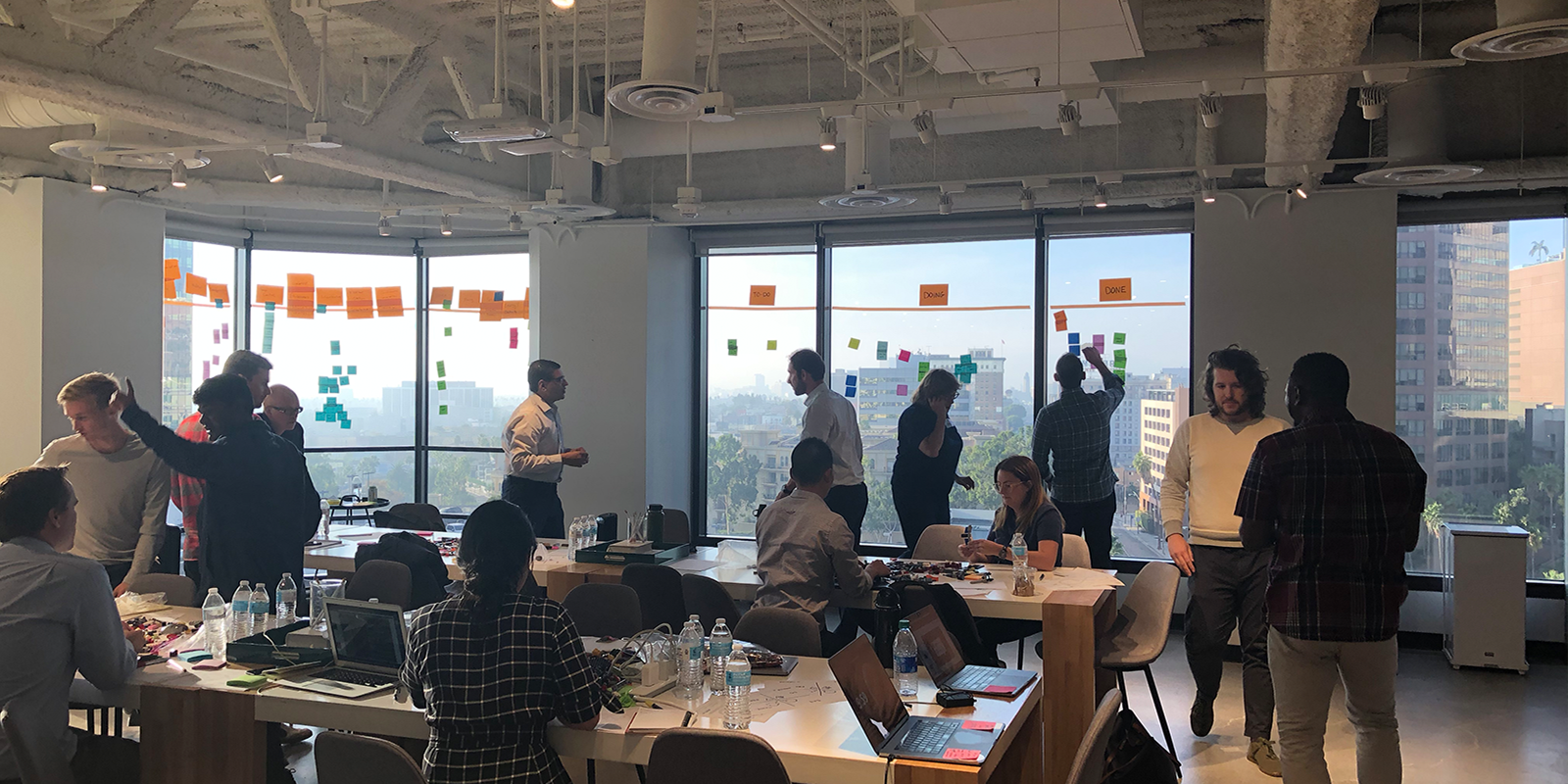
The full workshop room with Roadmap on the left side windows and Kanban board on the right.
✔️ STEP 8: Reflect & Admire
In true agile fashion, the workshop shall end with a Retrospective for team reflection on what was learned and effectiveness of the session. Please also take time to admire how much creativity and dedication went into building an amazing lego Colony on Mars. If time is running short, consider a simple retrospective style such as Plus/Delta.
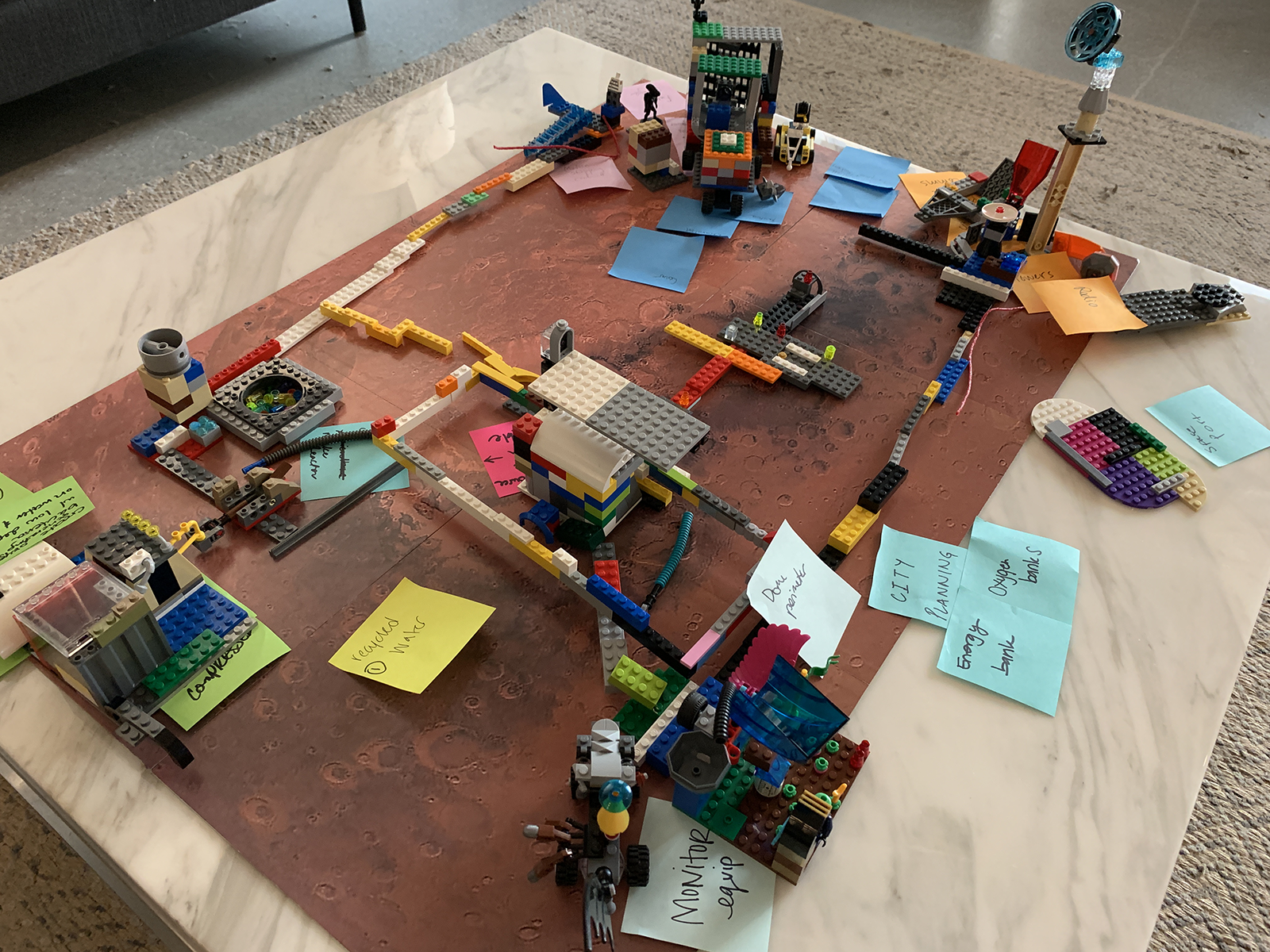
The Colony prototypes added to Mars map with notes to identify features.
Note: The Colony on Mars is one way to facilitate Lego Labs. If changing the scenario is what works best for participants feel free to do so!
_____
➡️ Tips for remote facilitation! ⬅️
The goal of Lego Labs is less about what is built and more about the practice and collaboration. This workshop can be redefined for a virtual environment by changing the scenario and setting.
The online lego modeling platform mecabricks.com is an option for virtual building. Some other tools that work well for ideation and visual collaboration include mural.co, miro.com or Freehand, and of course a video conference platform that works best for all participants involved should be utilized.
Look at Lego Labs
Links we love
Check out these great links which can help you dive a little deeper into running the Lego Labs practice with your team, customers or stakeholders.


